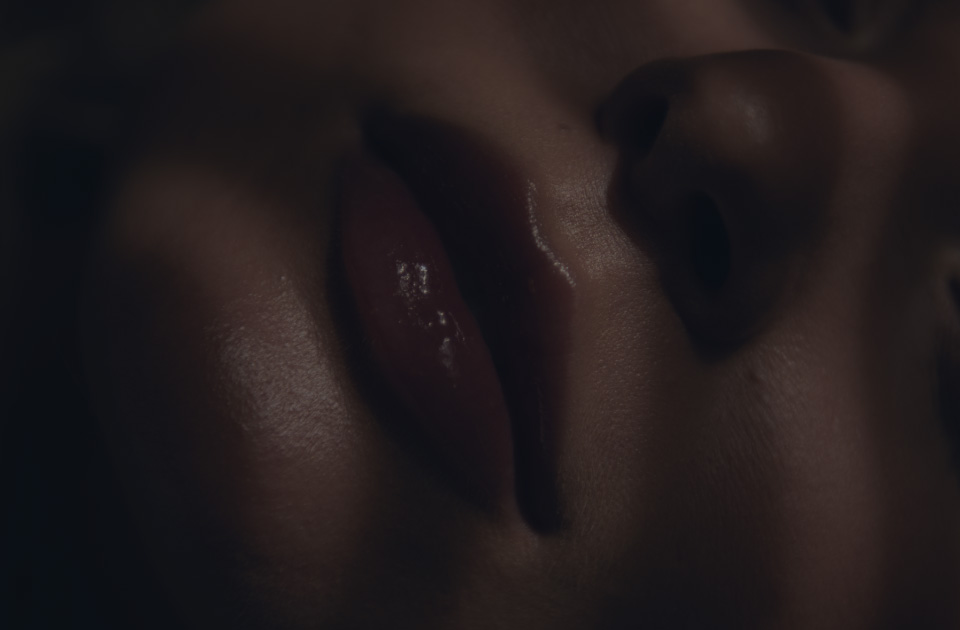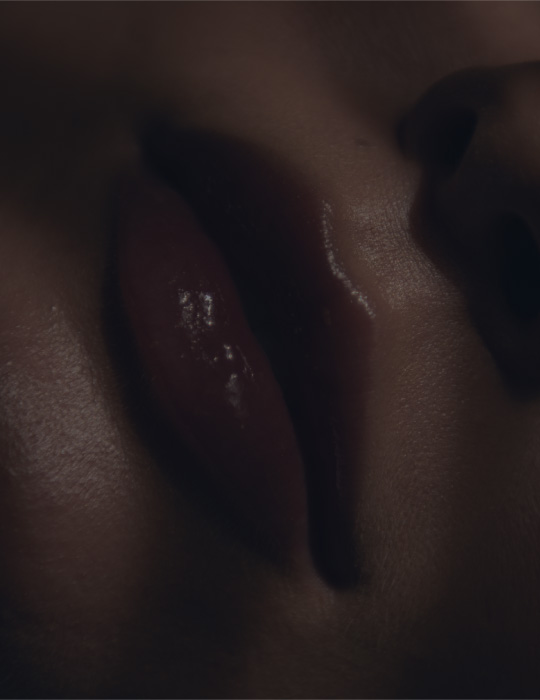McKeown Medical
167 Bath Street, Glasgow, G2 4SQ
A Deep Plane Face and Neck Lift is a surgical procedure designed to remove excess skin and tissue from the face and neck. The objective is to reposition the soft tissues of the face: putting them back where they belong, thus restoring an elegant, youthful facial appearance. It has its most profound and long lasting effects on the lower part of the face, jawline, jowls and neck although it also provides more modest lifting to the mid-face and cheek. It is typically combined with volume restoration injections, eyelid surgery and laser treatments for patients who want to achieve the most comprehensive rejuvenation.
A Deep Plane Face and Neck Lift is a surgical procedure designed to remove excess skin and tissue from the face and neck. The objective is to reposition the soft tissues of the face: putting them back where they belong, thus restoring an elegant, youthful facial appearance. It has its most profound and long lasting effects on the lower part of the face, jawline, jowls and neck although it also provides more modest lifting to the mid-face and cheek. It is typically combined with volume restoration injections, eyelid surgery and laser treatments for patients who want to achieve the most comprehensive rejuvenation.
Every patient is unique, and during our consultation process, we work with you to develop a bespoke treatment plan based on what you want to achieve.
Varies from person to person
Local
2-3 weeks
Lifetime
£20,000
A deep plane face and neck lift is an advanced procedure designed to reduce excess tissues from the face and neck. It is more complex and technically challenging procedure than most traditional facelift techniques because it involves going under the muscles of the face to release the retaining ligaments of the face so our facelift expert – Dr Russell Bramhall – can truly reposition the soft tissues, rather than simply placing tension on the skin.
Although the procedure is more technically demanding on the surgeon, it is now widely considered to be the gold standard method of performing a facelift if you want to achieve natural, long lasting effective results. For most of our patients a facelift will be a once in a lifetime experience and it’s important that we get them the best result we possibly can. We were the first clinic in Scotland – and to date remain the only clinic in Scotland – to offer this advanced technique.
The patients who chose to come to McKeown Medical for their procedure do so because they value the advanced technical expertise that our team offer and our passion for creating beautiful, yet understated, natural results. Our patients look fresh, not frozen.
1 / 5
A deep plane face and neck lift is an advanced procedure designed to reduce excess tissues from the face and neck. It is more complex and technically challenging procedure than most traditional facelift techniques because it involves going under the muscles of the face to release the retaining ligaments of the face so our facelift expert – Dr Russell Bramhall – can truly reposition the soft tissues, rather than simply placing tension on the skin.
Although the procedure is more technically demanding on the surgeon, it is now widely considered to be the gold standard method of performing a facelift if you want to achieve natural, long lasting effective results. For most of our patients a facelift will be a once in a lifetime experience and it’s important that we get them the best result we possibly can. We were the first clinic in Scotland – and to date remain the only clinic in Scotland – to offer this advanced technique.
The patients who chose to come to McKeown Medical for their procedure do so because they value the advanced technical expertise that our team offer and our passion for creating beautiful, yet understated, natural results. Our patients look fresh, not frozen.
A deep plane face and neck lift is an advanced procedure designed to reduce excess tissues from the face and neck. It is more complex and technically challenging procedure than most traditional facelift techniques because it involves going under the muscles of the face to release the retaining ligaments of the face so our facelift expert – Dr Russell Bramhall – can truly reposition the soft tissues, rather than simply placing tension on the skin.
Although the procedure is more technically demanding on the surgeon, it is now widely considered to be the gold standard method of performing a facelift if you want to achieve natural, long lasting effective results. For most of our patients a facelift will be a once in a lifetime experience and it’s important that we get them the best result we possibly can. We were the first clinic in Scotland – and to date remain the only clinic in Scotland – to offer this advanced technique.
The patients who chose to come to McKeown Medical for their procedure do so because they value the advanced technical expertise that our team offer and our passion for creating beautiful, yet understated, natural results. Our patients look fresh, not frozen.
2 / 5
A deep plane face and neck lift is an advanced procedure designed to reduce excess tissues from the face and neck. It is more complex and technically challenging procedure than most traditional facelift techniques because it involves going under the muscles of the face to release the retaining ligaments of the face so our facelift expert – Dr Russell Bramhall – can truly reposition the soft tissues, rather than simply placing tension on the skin.
Although the procedure is more technically demanding on the surgeon, it is now widely considered to be the gold standard method of performing a facelift if you want to achieve natural, long lasting effective results. For most of our patients a facelift will be a once in a lifetime experience and it’s important that we get them the best result we possibly can. We were the first clinic in Scotland – and to date remain the only clinic in Scotland – to offer this advanced technique.
The patients who chose to come to McKeown Medical for their procedure do so because they value the advanced technical expertise that our team offer and our passion for creating beautiful, yet understated, natural results. Our patients look fresh, not frozen.
A deep plane face and neck lift is an advanced procedure designed to reduce excess tissues from the face and neck. It is more complex and technically challenging procedure than most traditional facelift techniques because it involves going under the muscles of the face to release the retaining ligaments of the face so our facelift expert – Dr Russell Bramhall – can truly reposition the soft tissues, rather than simply placing tension on the skin.
Although the procedure is more technically demanding on the surgeon, it is now widely considered to be the gold standard method of performing a facelift if you want to achieve natural, long lasting effective results. For most of our patients a facelift will be a once in a lifetime experience and it’s important that we get them the best result we possibly can. We were the first clinic in Scotland – and to date remain the only clinic in Scotland – to offer this advanced technique.
The patients who chose to come to McKeown Medical for their procedure do so because they value the advanced technical expertise that our team offer and our passion for creating beautiful, yet understated, natural results. Our patients look fresh, not frozen.
3 / 5
A deep plane face and neck lift is an advanced procedure designed to reduce excess tissues from the face and neck. It is more complex and technically challenging procedure than most traditional facelift techniques because it involves going under the muscles of the face to release the retaining ligaments of the face so our facelift expert – Dr Russell Bramhall – can truly reposition the soft tissues, rather than simply placing tension on the skin.
Although the procedure is more technically demanding on the surgeon, it is now widely considered to be the gold standard method of performing a facelift if you want to achieve natural, long lasting effective results. For most of our patients a facelift will be a once in a lifetime experience and it’s important that we get them the best result we possibly can. We were the first clinic in Scotland – and to date remain the only clinic in Scotland – to offer this advanced technique.
The patients who chose to come to McKeown Medical for their procedure do so because they value the advanced technical expertise that our team offer and our passion for creating beautiful, yet understated, natural results. Our patients look fresh, not frozen.
A deep plane face and neck lift is an advanced procedure designed to reduce excess tissues from the face and neck. It is more complex and technically challenging procedure than most traditional facelift techniques because it involves going under the muscles of the face to release the retaining ligaments of the face so our facelift expert – Dr Russell Bramhall – can truly reposition the soft tissues, rather than simply placing tension on the skin.
Although the procedure is more technically demanding on the surgeon, it is now widely considered to be the gold standard method of performing a facelift if you want to achieve natural, long lasting effective results. For most of our patients a facelift will be a once in a lifetime experience and it’s important that we get them the best result we possibly can. We were the first clinic in Scotland – and to date remain the only clinic in Scotland – to offer this advanced technique.
The patients who chose to come to McKeown Medical for their procedure do so because they value the advanced technical expertise that our team offer and our passion for creating beautiful, yet understated, natural results. Our patients look fresh, not frozen.
4 / 5
A deep plane face and neck lift is an advanced procedure designed to reduce excess tissues from the face and neck. It is more complex and technically challenging procedure than most traditional facelift techniques because it involves going under the muscles of the face to release the retaining ligaments of the face so our facelift expert – Dr Russell Bramhall – can truly reposition the soft tissues, rather than simply placing tension on the skin.
Although the procedure is more technically demanding on the surgeon, it is now widely considered to be the gold standard method of performing a facelift if you want to achieve natural, long lasting effective results. For most of our patients a facelift will be a once in a lifetime experience and it’s important that we get them the best result we possibly can. We were the first clinic in Scotland – and to date remain the only clinic in Scotland – to offer this advanced technique.
The patients who chose to come to McKeown Medical for their procedure do so because they value the advanced technical expertise that our team offer and our passion for creating beautiful, yet understated, natural results. Our patients look fresh, not frozen.
A deep plane face and neck lift is an advanced procedure designed to reduce excess tissues from the face and neck. It is more complex and technically challenging procedure than most traditional facelift techniques because it involves going under the muscles of the face to release the retaining ligaments of the face so our facelift expert – Dr Russell Bramhall – can truly reposition the soft tissues, rather than simply placing tension on the skin.
Although the procedure is more technically demanding on the surgeon, it is now widely considered to be the gold standard method of performing a facelift if you want to achieve natural, long lasting effective results. For most of our patients a facelift will be a once in a lifetime experience and it’s important that we get them the best result we possibly can. We were the first clinic in Scotland – and to date remain the only clinic in Scotland – to offer this advanced technique.
The patients who chose to come to McKeown Medical for their procedure do so because they value the advanced technical expertise that our team offer and our passion for creating beautiful, yet understated, natural results. Our patients look fresh, not frozen.
5 / 5
A deep plane face and neck lift is an advanced procedure designed to reduce excess tissues from the face and neck. It is more complex and technically challenging procedure than most traditional facelift techniques because it involves going under the muscles of the face to release the retaining ligaments of the face so our facelift expert – Dr Russell Bramhall – can truly reposition the soft tissues, rather than simply placing tension on the skin.
Although the procedure is more technically demanding on the surgeon, it is now widely considered to be the gold standard method of performing a facelift if you want to achieve natural, long lasting effective results. For most of our patients a facelift will be a once in a lifetime experience and it’s important that we get them the best result we possibly can. We were the first clinic in Scotland – and to date remain the only clinic in Scotland – to offer this advanced technique.
The patients who chose to come to McKeown Medical for their procedure do so because they value the advanced technical expertise that our team offer and our passion for creating beautiful, yet understated, natural results. Our patients look fresh, not frozen.
Hear from our patients about their experience of the full facelift at McKeown Medical.
1 / 2
2 / 2
A deep plane face and neck lift starts with carefully-placed incisions around the ears.
These begin in the hairline, at the lower temple, and follow the curve in front of the ear: around the cartilage of the ear (the tragus), in front of the earlobe, up the crease at the back of the ear, and finally over into the hairline behind the ear. Next, the skin is elevated over the cheek and neck area; then the muscle layer – known as the SMAS – is lifted as a separate layer and tightened. Next, a small incision is made below the chin. This allows the surgeon to access the deeper tissues below the muscle in the neck and remove excess fat, re-shape the muscles and if necessary reduce the size of the salivary glands or any prominent muscles in the neck. Finally, the skin is re-draped: excess tissue is removed; the remainder is gently stitched together again.
Most importantly, every procedure is tailored to the individual patient – there is no “one-size-fits-all” approach.
A patient before and after a full facelift at McKeown Medical.
Whilst a surgical facelift is the gold standard method of removing excess tissues from the face, the facial ageing process is more complicated than this and for patients who want to achieve the most comprehensive rejuvenation we will often recommend additional procedures for example eyelid surgery, facial volume restoration, or laser resurfacing to achieve a ‘full facelift’ effect.
Our resident facelift surgeon, Mr Russell Bramhall, is regarded for his facelifts and blepharoplasties, and strives for an elegant, “invisible” result. Here, he discusses his approach to facelifts.
Hear from our patients about their experience at McKeown Medical.
1 / 8
2 / 8
3 / 8
4 / 8
5 / 8
6 / 8
7 / 8
8 / 8
I had face and neck lift surgery with Mr Russell Bramhall. I can honestly say that all aspects of the process were excellent, and I cannot recommend Russell highly enough. It’s now 6 months on, I am absolutely delighted with the results and I cannot thank Russell enough for giving me my confidence back.
A McKeown Medical patient on RealSelf 6 months post-op
Dr. Russell is an amazing surgeon. Underwent upper blepharoplasty and facelift with liposuction under chin. I was pretty nervous before the surgery but needn’t have been as Dr. Russell and his team were so calming and professional. The aftercare provided was amazing. I am delighted with the results and wouldn’t hesitate to recommend Dr. Russell.
A McKeown Medical patient on RealSelf
My experience with Dr Bramhall was fantastic. Having never been through any procedure like this, I was encouraged by his knowledge, professionalism and realistic approach. My confidence has grown since having my surgery and that, in turn, allows me to be a better version of myself. I am delighted with my results.
A McKeown Medical patient on RealSelf 3 months post-op
From the first consultation Russell made me feel extremely comfortable and confident about the procedure. It’s been 8 weeks since the surgery and I am over the moon with my results. Five star experience. Before, during and aftercare is exceptional. I would never use anyone else if I was to consider surgery again. Can’t thank Russell enough how confident I am now, I feel fantastic.
A McKeown Medical patient on RealSelf 2 months post-op
It has been 5 months since my face and neck lift. I am so happy I had the surgery, my saggy neck and jowls have now gone and everything looks so natural, Russell combines technical skill with meticulous artistry. My outcome is natural and refreshed; most importantly, I still look like me.If you are looking for a brilliant and talented surgeon Dr Bramhall will give you a fantastic result. Many thanks to Russell, Darren, Tom and their team.
A McKeown Medical patient on RealSelf 5 months post-op
My experience with Mr Bramhall was faultless from start to finish. He put me completely at ease, before and during my procedure, as did the staff assisting him, kind and caring. Everything went to plan, without complications, and I am now healing perfectly with beautiful results. I would thoroughly recommend Mr Bramhall and the clinic.
A McKeown Medical patient on RealSelf 3 months post-op
At my consultation, Dr Bramhall explained the procedure and answered all my questions. He is so friendly and really puts you at ease. The aftercare at the clinic and with Russell has been absolutely fantastic, they are always a phone call away. If I was looking for any more cosmetic surgery I wouldn’t go anywhere else. I am over the moon with my face & neck lift. It has given me a fresh and youthful face.
A McKeown Medical patient on RealSelf 5 months post-op
I had a face and neck lift with Russell. It is the best thing I have done and I’m delighted with the result. The aftercare was second to none and I was totally given the best care I could wish for. I feel like a fully refreshed version of myself. I look natural and no one would guess I have had a face and neck lift. I highly recommend Russell for his professional yet friendly manner. He completely put me at ease and achieved the results I was hoping for.
A McKeown Medical patient on RealSelf 5 months post-op
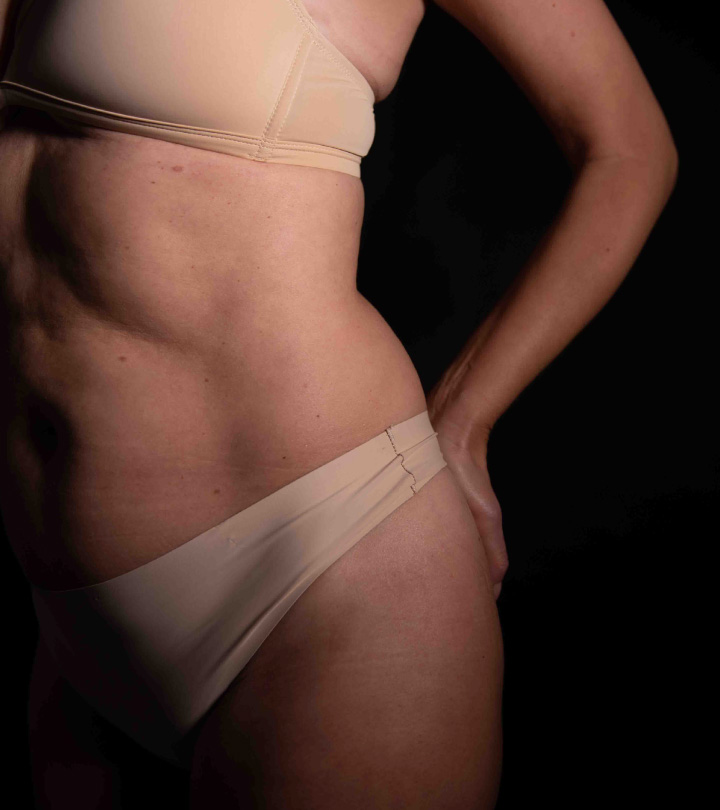
Finding the right treatment for you is the most important factor in ensuring that you are on the correct path to achieve the results you desire. Our pre-consultation form helps us to identify your needs and, ultimately, gets you on the right path to achieving your optimal results.
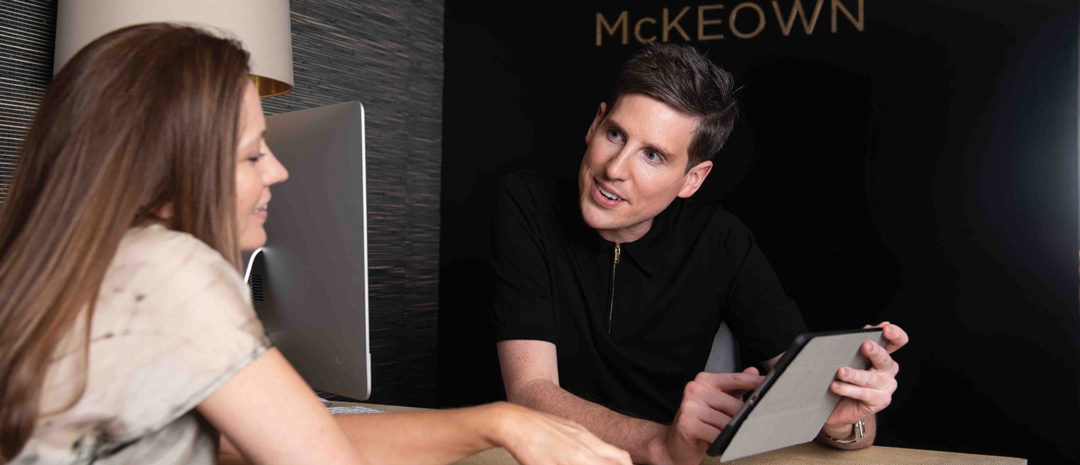
At McKeown Medical, we create a bespoke treatment plan for every patient, designed to help you achieve your goals with your facelift and delivering natural looking rejuvenation.
Facelift surgery can be performed under local or general anaesthetic. Most of our patients opt for local anaesthetic, to reduce the recovery time, however this is tailored to the patient preference. If a patient requires general anaesthetic, this is offered in a local private hospital.
Most facelifts begin the same, with the surgeon making incisions in the sideburn area (in front of the ears), curving around the back of the ear and sometimes into the hair-bearing scalp behind the ear.
What happens next however varies enormously from surgeon to surgeon, and clinic to clinic. In our practice, Dr Russell Bramhall begins work below the skin on the SMAS layer – sometimes referred to as the muscle layer. In the deep plane technique, he goes below the SMAS to release the retaining ligaments of the face so that the soft tissues can be effectively repositioned. A key component of the deep plane technique is the ability to truly reposition the tissues, rather than placing tension on them. Tension is what makes faces look tight and unnatural. Repositioning is the most effective and natural technique.
The focus of our work is to release the ligaments of the face so we can truly reposition the tissues of the face. By repositioning the tissues – rather than simply placing tension on them – we are able to achieve effective rejuvenation, without the telltale signs of surgery.
The scars are hidden in the natural crease in front of and within the ear, as well as behind this area into the hairline. In the short term, the scars can look red and raised and usually need some camouflage with hair and make up. When the incisions scars have had time to heal properly however, they become barely perceptible.
We usually recommend that you restrict your activities for at least a couple of weeks after surgery so that you have a chance to make a full recovery as quickly as possible.
When you leave after your procedure you will typically already be experiencing bruising and swelling although this will continue to get worse for the first few days after surgery. We recommend that you try to sleep with your head elevated which will help the swelling drain down. If you fall asleep on one side at night, you will likely find that side to be more swollen in the morning although it should even out again as the day goes on. We also ask you to wash your hair daily during the recovery period and allow the hot soapy water to run over the wound edges: this is an excellent way of keeping the wounds clean.
We will also usually prescribe you a course of antibiotics to reduce the risk of infection. Usually, simple paracetamol is the only pain medication that our patients need. It is rare for us to have to prescribe anything stronger than this.We will see you regularly during the recovery period to check that things are progressing as expected. As a minimum, we will see you the day after surgery, then a week later, and another week later followed by appointments at two and six months to check you are happy with the final outcome of your surgery. If you need to be seen more frequently than this, for example if you have any wound healing issues, then we will of course provide that care until we are all satisfied with the progress.
Following our guidelines and aftercare is key to ensuring a successful recovery. This period is not only about the physical healing process but also about allowing the subtle transformations of the facelift surgery to settle in and for you to deal emotionally with the change to your appearance.
Although the procedure involves lifting some of the skin from the cheek, a facelift procedure usually has only minor impact on the cheek itself. Likewise, deep lines and wrinkles around the mouth area are rarely improved by this procedure in the long-term. This is because the changes that occur in this region are predominantly related to volume loss – so they are best treated using restorative techniques, such as injectable fillers, which are often combined with a surgical facelift. The main impact of the surgical procedure is to reduce excess tissues from the face which is most notably seen on the lower face, jawline, jowls and neck.
A Deep Plane Face and Neck Lift is performed under local anaesthetic – which means that you are awake throughout the procedure. This might sound daunting; however, there are several benefits. Significantly, it avoids the complications related to anaesthetic; but it also enhances the recovery process (most patients experience comparably less bruising and swelling following use of local, rather than general, anaesthetic). Administering local anaesthetic is simple. A series of injections is delivered, sufficiently numbing the area and ensuring that you don’t experience pain during the procedure. In fact, many patients compare it to undergoing a dental procedure. Our team of nurses are experienced at chatting and helping to distract you whilst the surgeon works.
Most people will require a couple of weeks off work following the procedure, to allow the immediate signs of surgery to settle. We do have some patients who choose to return to work after a week or so – but we prefer you to take two weeks off if you can. We do not routinely use drains or bandages following surgery – thus enhancing patient comfort.
We ask you to come in the day after your procedure for your first check-up. Following this, we would normally see you back in the clinic for a routine follow-up at one week, two weeks, six weeks, three months and six months – plus, of course, as many other times as you require until we are all satisfied that you have fully healed and achieved the outcome we were anticipating. The scars from a Deep Plane Face and Neck Lift can take a year or more to fully settle and for any numbness to recover – however, we will keep you under our care until you are fully satisfied with the outcome.
The scars from a Deep Plane Face and Neck Lift can take a year or more to fully settle and for any numbness to recover – however, we will keep you under our care until you are fully satisfied with the outcome.
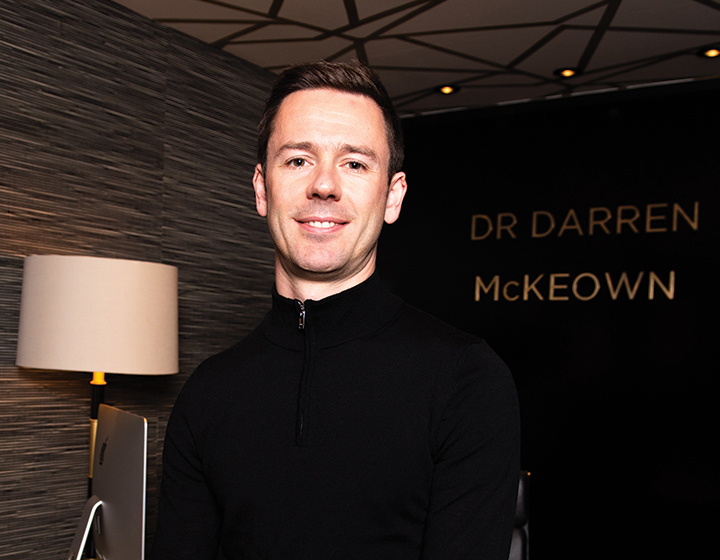
Mr Russell Bramhall graduated from Edinburgh University before undergoing extensive training at some of the UK’s most renowned plastic surgery units. Russell’s expertise was further honed through specialist training in Harley Street, where he worked alongside some of the most highly-regarded names in aesthetics.
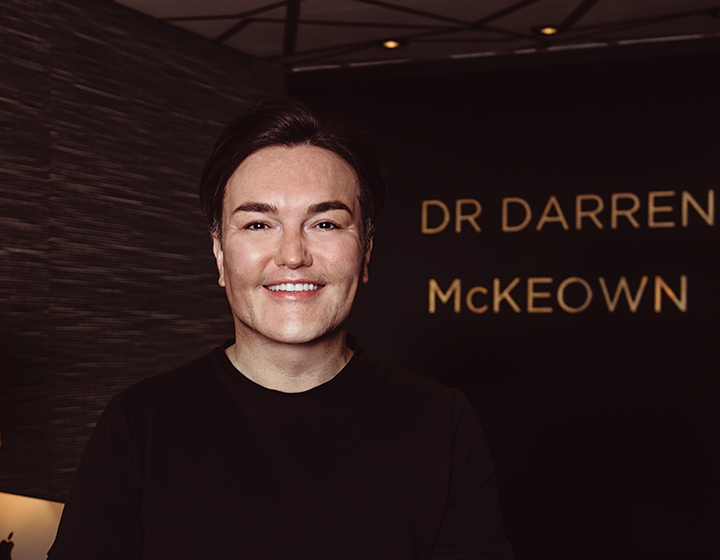
Our founder, Dr Darren McKeown, is renowned for his expertise and artistry with dermal fillers. As a peer-reviewed medical author, he is passionate about treatments that stand up to scientific scrutiny. Above all, Dr McKeown believes in a global approach; delivering flawless results – and rejuvenation that lasts.
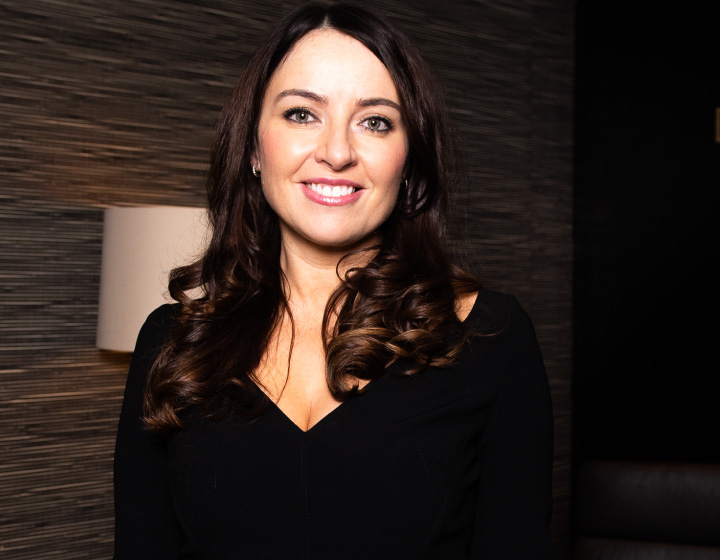
Dr Rhona Cameron is a skilled injector who has been extensively trained in Dr McKeown’s signature intuitive technique. Her treatments blend advanced facial optimisation with powerful, energy-based devices – such as lasers, BBL and radio frequency – energising the appearance and enhancing skin health.
1 / 3
2 / 3
3 / 3

Mr Russell Bramhall graduated from Edinburgh University before undergoing extensive training at some of the UK’s most renowned plastic surgery units. Russell’s expertise was further honed through specialist training in Harley Street, where he worked alongside some of the most highly-regarded names in aesthetics.

Our founder, Dr Darren McKeown, is renowned for his expertise and artistry with dermal fillers. As a peer-reviewed medical author, he is passionate about treatments that stand up to scientific scrutiny. Above all, Dr McKeown believes in a global approach; delivering flawless results – and rejuvenation that lasts.

Dr Rhona Cameron is a skilled injector who has been extensively trained in Dr McKeown’s signature intuitive technique. Her treatments blend advanced facial optimisation with powerful, energy-based devices – such as lasers, BBL and radio frequency – energising the appearance and enhancing skin health.
1 / 3
2 / 3
3 / 3
Keep up to date with the latest news from McKeown Medical and get access to expert insights, our latest before and afters and exclusive offers.
